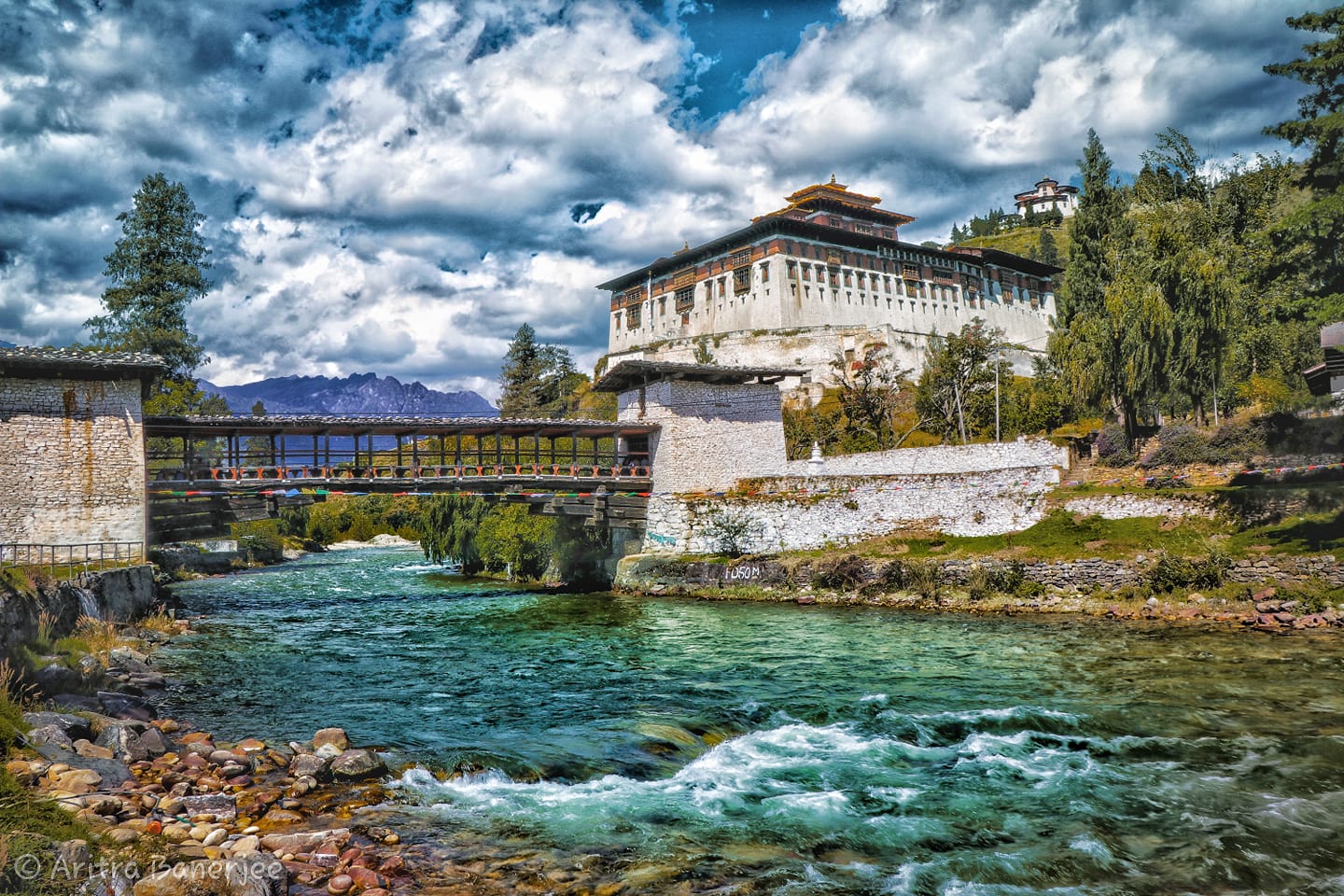
(Approx. 65 kms/ 2 hours)
Arrive at Paro International Airport. After arrival, proceed to the immigration counter. Complete Immigration formalities and you will be met with your chauffeur/ guide at the outside of the airport terminal.
You will be transferred to Thimphu.
Thimphu - is the capital and the largest city of the Kingdom of Bhutan. Thimphu is the political and economic hub of Bhutan. The city is located on the bank of River Wang Chuu. Thimphu contains most of the important political buildings in Bhutan, including the National Assembly of the newly formed parliamentary democracy and the residence of the King. Thimphu holds a fascinating four-day festival, held every year during autumn (September/ October).
Arrive at Thimphu. Check-in to your hotel.
Later proceed for a short sightseeing of Thimphu. (Sightseeing on this day won’t be possible if the flight arrival time is beyond 2 pm)
Memorial Chorten - On the western side of Thimphu's Memorial Chorten, a row of wooden platforms sits in the long grass. Each has been polished smooth by the prostrations of faithful worshippers who gather here in sun, rain or snow, to pay their respects to His Majesty Jigme Dorji Wangchuck (1928–1972), the Third King of Bhutan. The Chorten, with its elaborate golden peak representing the crescent moon and sun, is one of Thimphu's most striking religious landmarks. Constructed in 1974, the Tibetan-style chorten's whitewashed exterior boasts richly decorated chapels - one facing each of the cardinal directions.
Night Stay: Thimphu
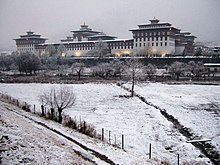
Breakfast at the hotel. After breakfast, proceed for full day sightseeing tour of Thimphu.
Kuensel Phodrang – The statue was cast in bronze in China and transported by sea and road to this site once occupied by the palace of Druk Desi, a secular ruler of Bhutan in the eighteenth-century. At its completion, the statue will contain 125,000 gilded Buddha statues and a wealth of other statuary.
Takin Reserve & Mini Zoo - Add to Wish List Hidden in a fold of the forest-draped hills high above Thimphu, a herd of takin make their home in the Mothithang Takin Preserve. Formerly a small zoo, the king decreed that the animals should be freed rather than kept in captivity. However, instead of wandering deeper into the hills, the tame takin took to the streets of Thimphu, where they became a traffic hazard as they foraged for food.
Anim Dratshang (Nunnery) - On a hillside above Thimphu's Tashichho Dzong, just off Gaden Lam, stands Thangtong Dewachen Dupthop Nunnery. Home to around 60 nuns, the modest structure was built in 1976 by the 16th incarnation of Thangtong Gyelpo, the famed fifteenth-century "Iron Bridge Monk" who forged chain-link bridges that still span several of Bhutan's fast-flowing rivers. The road to the nunnery offers magnificent views of Tashichho Dzong, while the small complex houses a covered chorten and an unusual pillar topped with two carved deer (symbolic of the Deer Park at Sarnath, where Buddha first taught after his enlightenment) and a wheel of law.
Folk Heritage Museum - The Folk Heritage Museum, located on the outskirts of Thimphu, recreates a traditional Bhutanese family home inside a beautiful 19th century rammed earth and timber building. Here, the family's prized possessions are on display: shiny wooden bowls line the kitchen shelves, richly patterned fabrics hang alongside aged leopard fur bags in the room next door, and gold glints from thangkas hung in the family's altar room.
Royal Textile Academy & Museum - Intricately patterned wild silk kiras from Lhuentse hang alongside rough nettle fiber cloth from Zhemgang in Bhutan's excellent Royal Textile Academy. The museum, housed in an impressive modern building, celebrates the country's vibrant and varied tradition of hand weaving.
Handicrafts Market – An interesting market with local items and bargain price handicraft goods.
Tashichho Dzong - Standing proudly on the western bank of the Wang Chhu a few kilometers north of central Thimphu, Tashichho Dzong looks every inch the seat of government. While the National Assembly no longer convenes inside the fortress's whitewashed walls, today the dzong still houses the throne room and the king's offices as well as the ministries of home affairs and finance.
Night Stay: Thimphu
Meals: Breakfast
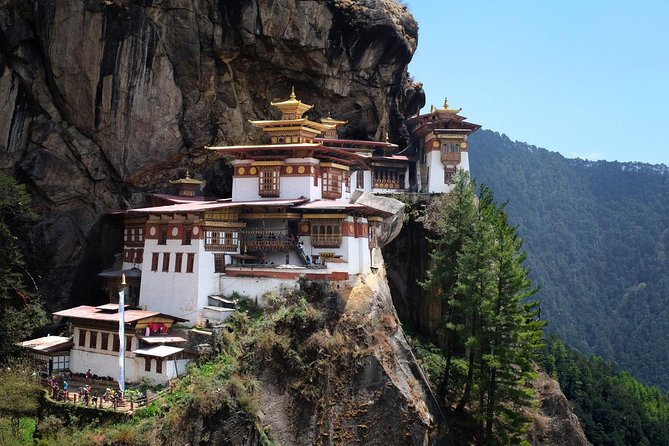
(Approx.120 kms/ 4 hours with en-route stop)
Breakfast at the hotel. After breakfast, proceed for Punakha.
En-route visit Dochu La - A mountain pass leading further into the Punakha Valley. It offers a stunning 360 degree panoramic view of Eastern Himalayan mountain ranges. The view is especially scenic on clear, winter days with snowcapped mountains forming a majestic backdrop to the tranquility of the 108 chortens gracing the mountain pass. Enjoy lunch at newly open restaurant Druk Wangyel Cafe and visit Punakha Dzong and Chimi Lakhang on your way to Punakha.
Return back to the hotel.
Night Stay: Punakha
Meals: Breakfast
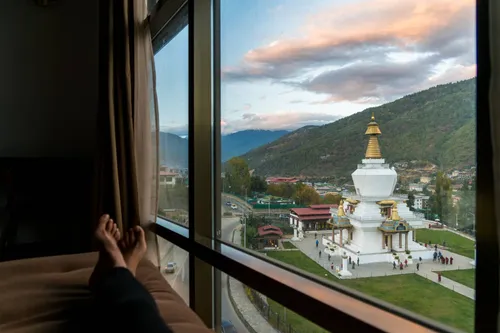
(Approx. 150 kms/ 4.5 hours)
Breakfast at the hotel. After breakfast, you will be transferred to Paro. Arrive Paro by the afternoon and proceed for a brief sightseeing of Paro.
Paro - The valley extends from the confluence of the Paro Chhu and the Wang Chhu rivers at Chuzomupto Mt. Jomolhari at the Tibetan border to the North. This picturesque region is one of the widest valleys in the kingdom and is covered in fertile rice fields and has a beautiful, crystalline river meandering down the valley.
DrukgyelDzong – The smoke-smudged walls of DrukgyelDzong's four-story utse (central tower) still stand intact among the surrounding ruins. Located at the head of the Paro Valley, the once-magnificent DrukgyelDzong was built in 1649 and stood along a major route into Tibet for three centuries until it burned to the ground in a 1951 fire. The dzong's name, which translates as “Bhutan's Victory,” commemorates a 1644 defeat of Tibetan forces in this region. Today, a narrow path spirals up towards the dzong past the collapsed remains of a walled passage that once secured the dzong's water supply. Go through the gate to access a flagstoned courtyard once used for festivals. Beyond this lies the main body of the dzong, where wild strawberries and herbs sprout among the rubble.
KyichuLakhang - When it was divined that she was preventing the spread of Buddhism, the great seventh-century Tibetan king SongtsenGampo pinned her in place with 108 magically constructed temples -- allowing Buddhism to flourish above her restrained body. One of Bhutan's two ancient demoness-pinning temples, Paro'sKyichuLhakhang is believed to hold the demoness's left foot in place. With its tiered roof and luminous white walls, the lhakhang's age is not immediately apparent. It is only inside the monastery's ancient heart, the JowoLhakhang, that the sanctuary's long history is palpable. Golden murals shine faintly from smoke-darkened walls, and the floor has been polished smooth by the feet of countless faithful practitioners. The holiest part of the chapel surrounds the revered seventh-century statue of JowoSakyamuni, visible through a gilded door.
Ta Dzong - National Musuem of Bhutan
Night Stay: Punakha
Meals: Breakfast
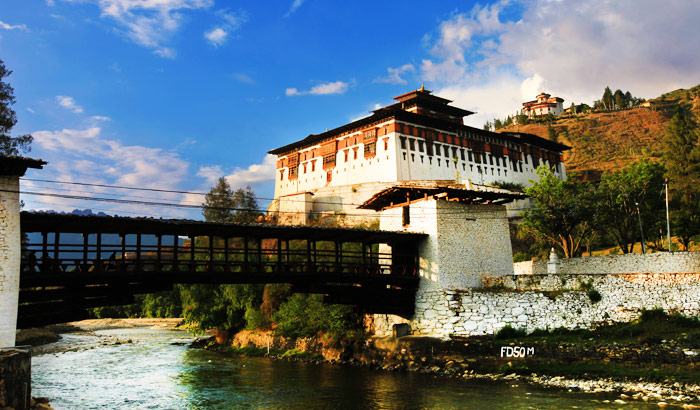
Breakfast at the hotel. After breakfast, visit Paro.
Tiger Nest - From a distance, Bhutan's most iconic building seems to float, weightless, halfway up a sheer cliff-face, 900 meters (3,000 feet) above the floor of the Paro Valley. As you wind your way breathlessly up the long, steep path towards TaktsangLhakhang, the monastery periodically reveals itself, rising out of the forest, closer and more solid with each re-appearance.
Night Stay: Punakha
Meals: Breakfast

Breakfast at the hotel.
*for early flights, there will be no breakfast
After breakfast, transfer to the airport to board your flight back to home.
Meals: Breakfast
Off-season: January, February, June, July, August, December
On-season: March, April, May, September, October, November